class: title-slide, middle # Estimation of Food Webs Interactions with Linear Inverse Models .instructors[ .font180[**Kevin Cazelles, Kevin McCann & Kayla Hale**] <br><br> .font120[2024-04-24] ] <div class="logo"> <img src="img/logo_cfem.png" height="100px"></img> <img src="img/logo_uog.jpg" height="120px"></img> </div> ??? good understanding of what it does and have a broad perspective --- class: inverse, center, middle # Introduction ![:custom_hr]() --- # Linear Inverse Models ### Solve systems of equalities, inequalities and approximations .pull-left[ `$$\mathbf{E} \mathbf{x} = \mathbf{f}$$` `$$\mathbf{E} \mathbf{x} \approx \mathbf{b}$$` `$$\mathbf{E} \mathbf{x} \geq \mathbf{g}$$` ] --- # Linear Inverse Models ### Solve systems of equalities, inequalities and approximations .pull-left[ `$$\mathbf{E} \color{red}{\mathbf{x}} = \mathbf{f}$$` `$$\mathbf{E} \color{red}{\mathbf{x}} \approx \mathbf{b}$$` `$$\mathbf{E} \color{red}{\mathbf{x}} \geq \mathbf{g}$$` ] --- # Linear Inverse Models ### Solve systems of equalities, inequalities and approximations .pull-left[ `$$\mathbf{E} \color{red}{\mathbf{x}} = \mathbf{f}$$` `$$\mathbf{E} \color{red}{\mathbf{x}} \approx \mathbf{b}$$` `$$\mathbf{E} \color{red}{\mathbf{x}} \geq \mathbf{g}$$` ] .pull-right[ `$$2\color{red}{x} = 12$$` </br> `$$2\color{red}{x} + \color{red}{y} = 12$$` 2 unknown variables, 1 equality ] --- # Linear Inverse Models ### Solve systems of equalities, inequalities and approximations .pull-left[ `$$\mathbf{E} \color{red}{\mathbf{x}} = \mathbf{f}$$` `$$\mathbf{E} \color{red}{\mathbf{x}} \approx \mathbf{b}$$` `$$\mathbf{E} \color{red}{\mathbf{x}} \geq \mathbf{g}$$` ] .pull-right[ `$$2\color{red}{x} = 12$$` </br> `$$\color{red}{y} = 12 - 2\color{red}{x}$$` in other words, a **line** ] --- # Linear Inverse Models ### Solve systems of equalities, inequalities and approximations .pull-left[ `$$\mathbf{E} \color{red}{\mathbf{x}} = \mathbf{f}$$` `$$\mathbf{E} \color{red}{\mathbf{x}} \approx \mathbf{b}$$` `$$\mathbf{E} \color{red}{\mathbf{x}} \geq \mathbf{g}$$` ] .pull-right[ `$$2\color{red}{x} = 12$$` </br> `$$2\color{red}{x} + \color{red}{y} = 12$$` `$$\color{red}{x} > 0; \color{red}{y} > 0$$` $$\color{red}{y} < 4 $$ ] all `\((\color{red}{x}, \color{red}{y})\)` such as `\(\color{red}{y} = 12 - 2\color{red}{x}\)` and `\(x \in ]4, 6[\)` : a **segment** -- ### Large array of problems - Optimal transportation, clustering, solving Sudoku, etc. - <svg aria-hidden="true" role="img" viewBox="0 0 640 512" style="height:1em;width:1.25em;vertical-align:-0.125em;margin-left:auto;margin-right:auto;font-size:inherit;fill:currentColor;overflow:visible;position:relative;"><path d="M579.8 267.7c56.5-56.5 56.5-148 0-204.5c-50-50-128.8-56.5-186.3-15.4l-1.6 1.1c-14.4 10.3-17.7 30.3-7.4 44.6s30.3 17.7 44.6 7.4l1.6-1.1c32.1-22.9 76-19.3 103.8 8.6c31.5 31.5 31.5 82.5 0 114L422.3 334.8c-31.5 31.5-82.5 31.5-114 0c-27.9-27.9-31.5-71.8-8.6-103.8l1.1-1.6c10.3-14.4 6.9-34.4-7.4-44.6s-34.4-6.9-44.6 7.4l-1.1 1.6C206.5 251.2 213 330 263 380c56.5 56.5 148 56.5 204.5 0L579.8 267.7zM60.2 244.3c-56.5 56.5-56.5 148 0 204.5c50 50 128.8 56.5 186.3 15.4l1.6-1.1c14.4-10.3 17.7-30.3 7.4-44.6s-30.3-17.7-44.6-7.4l-1.6 1.1c-32.1 22.9-76 19.3-103.8-8.6C74 372 74 321 105.5 289.5L217.7 177.2c31.5-31.5 82.5-31.5 114 0c27.9 27.9 31.5 71.8 8.6 103.9l-1.1 1.6c-10.3 14.4-6.9 34.4 7.4 44.6s34.4 6.9 44.6-7.4l1.1-1.6C433.5 260.8 427 182 377 132c-56.5-56.5-148-56.5-204.5 0L60.2 244.3z"/></svg> https://jump.dev/JuMP.jl/stable/tutorials/linear/diet/ --- # Linear Inverse Models in Food Webs 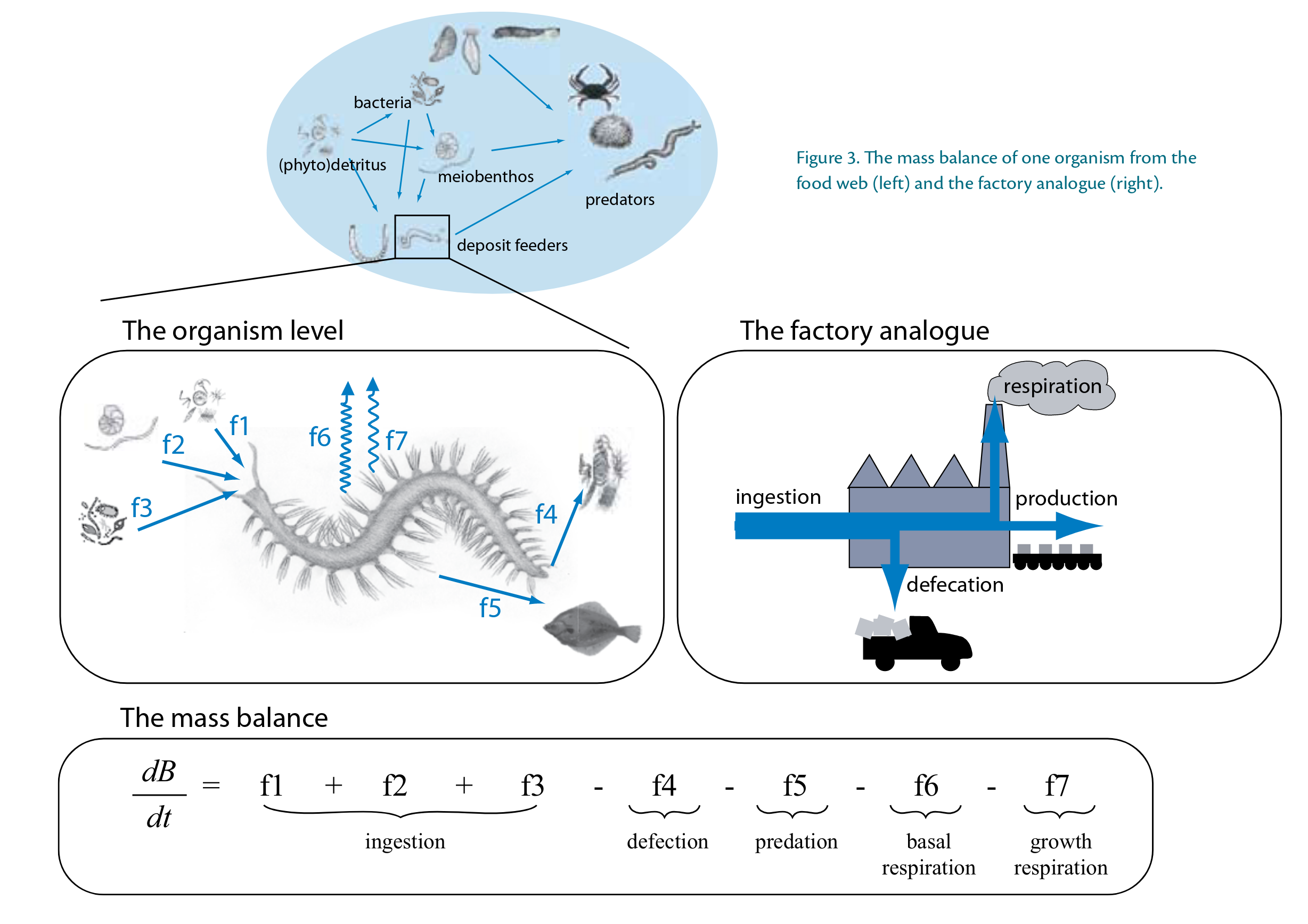 - <svg aria-hidden="true" role="img" viewBox="0 0 448 512" style="height:1em;width:0.88em;vertical-align:-0.125em;margin-left:auto;margin-right:auto;font-size:inherit;fill:currentColor;overflow:visible;position:relative;"><path d="M96 0C43 0 0 43 0 96V416c0 53 43 96 96 96H384h32c17.7 0 32-14.3 32-32s-14.3-32-32-32V384c17.7 0 32-14.3 32-32V32c0-17.7-14.3-32-32-32H384 96zm0 384H352v64H96c-17.7 0-32-14.3-32-32s14.3-32 32-32zm32-240c0-8.8 7.2-16 16-16H336c8.8 0 16 7.2 16 16s-7.2 16-16 16H144c-8.8 0-16-7.2-16-16zm16 48H336c8.8 0 16 7.2 16 16s-7.2 16-16 16H144c-8.8 0-16-7.2-16-16s7.2-16 16-16z"/></svg> Soetaert & Van Oevelen (2009), **Oceanography**. ??? You may know some flows --- # Linear Inverse Models in Food Webs .pull-left[ </br> $$\frac{dB_i}{dt} = f_1 + f_2 + f_3 + ... $$ ] .pull-right[ 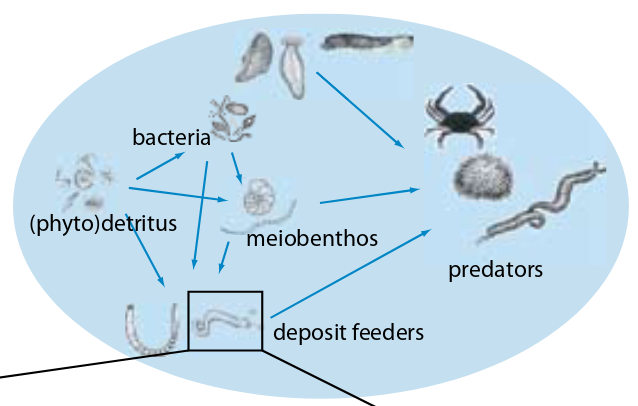 ] -- - Mass balance (think ECOPATH) -- - A set of equalities -- - Some knowledge about flows: - known parameters: `\(f_1 = 2.5\)` - inequalities: `\(f_1 > f_2\)` - approximations: `\(f_1 \approx 2.5\)` -- --- # Linear Inverse Models in Food Webs $$\frac{dB_i}{dt} = f_1 + f_2 + f_3 + ... $$ - Using LIM, we obtain a **space**, sets of working flows `\((f_1, f_2, ...)\)`  --- # Linear Inverse Models in Food Webs  - <svg aria-hidden="true" role="img" viewBox="0 0 448 512" style="height:1em;width:0.88em;vertical-align:-0.125em;margin-left:auto;margin-right:auto;font-size:inherit;fill:currentColor;overflow:visible;position:relative;"><path d="M96 0C43 0 0 43 0 96V416c0 53 43 96 96 96H384h32c17.7 0 32-14.3 32-32s-14.3-32-32-32V384c17.7 0 32-14.3 32-32V32c0-17.7-14.3-32-32-32H384 96zm0 384H352v64H96c-17.7 0-32-14.3-32-32s14.3-32 32-32zm32-240c0-8.8 7.2-16 16-16H336c8.8 0 16 7.2 16 16s-7.2 16-16 16H144c-8.8 0-16-7.2-16-16zm16 48H336c8.8 0 16 7.2 16 16s-7.2 16-16 16H144c-8.8 0-16-7.2-16-16s7.2-16 16-16z"/></svg> Soetaert & Van Oevelen (2009), **Oceanography**. --- class: inverse, center, middle # LIM and food web resilience ![:custom_hr]() --- # LIM in classical Lotka-Volterra </br> `$$\begin{equation}\begin{aligned} \frac{dPrey}{dt} &= Prey \left( r_{Prey} + a_{1, 1} Prey - a_{1, 2} Predator \right) \\ \frac{dPredator}{dt} &= Predator \left( r_{Predator} + a_{2, 1} Prey \right) \end{aligned}\end{equation}$$` - Functional response type I --- # LIM in classical Lotka-Volterra </br> `$$\begin{equation}\begin{aligned} \frac{d\color{red}{Prey}}{dt} &= \color{red}{Prey} \left( r_{Prey} + a_{1, 1} \color{red}{Prey} - a_{1, 2} \color{red}{Predator} \right) \\ \frac{d\color{red}{Predator}}{dt} &= \color{red}{Predator} \left( r_{Predator} + a_{2, 1} \color{red}{Prey} \right) \end{aligned}\end{equation}$$` - Functional response type I Classically: 1. interactions are known 2. we study variations of `\(Predator\)` and `\(Prey\)` population (individuals, biomass), the stability of the system --- # LIM in classical Lotka-Volterra ### Assumptions - biomass known - near equilibrium we have: `$$\begin{equation}\begin{aligned} \left( r_{Prey} + a_{1, 1} \color{red}{Prey} - a_{1, 2} \color{red}{Predator} \right) &= 0\\ \left( r_{Predator} + a_{2, 1} \color{red}{Prey} \right) &= 0 \end{aligned}\end{equation}$$` --- # LIM in classical Lotka-Volterra ### Assumptions - biomass known - near equilibrium we have: `$$\begin{equation}\begin{aligned} \left( r_{Prey} + \color{red}{a_{1, 1}} Prey - \color{red}{a_{1, 2}} Predator \right) &= 0\\ \left( r_{Predator} + \color{red}{a_{2, 1}} Prey \right) &= 0 \end{aligned}\end{equation}$$` -- ### Let's use LIM - 2 equalities - 3 unknown variables: **interaction strengths** that are hard to measure - `\(Prey\)` and `\(Predator\)` are known: **biomass/population known** - **Interactions are positive** - **Interactions are asymmetrical**: - conversion efficiency: `\(a_{1, 2} > a_{2,1}\)` --- # Sets of interaction strengths Sets of interactions strengths that lead to the observed biomass | `\(a_{1,1}\)`| `\(a_{2,1}\)` | `\(a_{1,2}\)` | |---------:|-----:|--------:| | 0.1326175| 1| 1.867382| | 0.2158816| 1| 1.784118| | 0.0697550| 1| 1.930245| | 0.3031896| 1| 1.696810| | 0.0743744| 1| 1.925626| | 0.2347560| 1| 1.765244| | 0.4509523| 1| 1.549048| | 0.3427189| 1| 1.657281| | 0.3577168| 1| 1.642283| --- # Distribution of interaction strengths  --- # Resilience metric `$$\begin{equation}\begin{aligned} \frac{dPrey}{dt} &= Prey \left( r_{Prey} + a_{1, 1} Prey - a_{1, 2} Predator \right) \\ \frac{dPredator}{dt} &= Predator \left( r_{Predator} + a_{2, 1} Prey \right) \end{aligned}\end{equation}$$` - We use the Jacobian to determine the **leading eigen value** a proxy for **resilience** --- # Distribution of interaction strengths 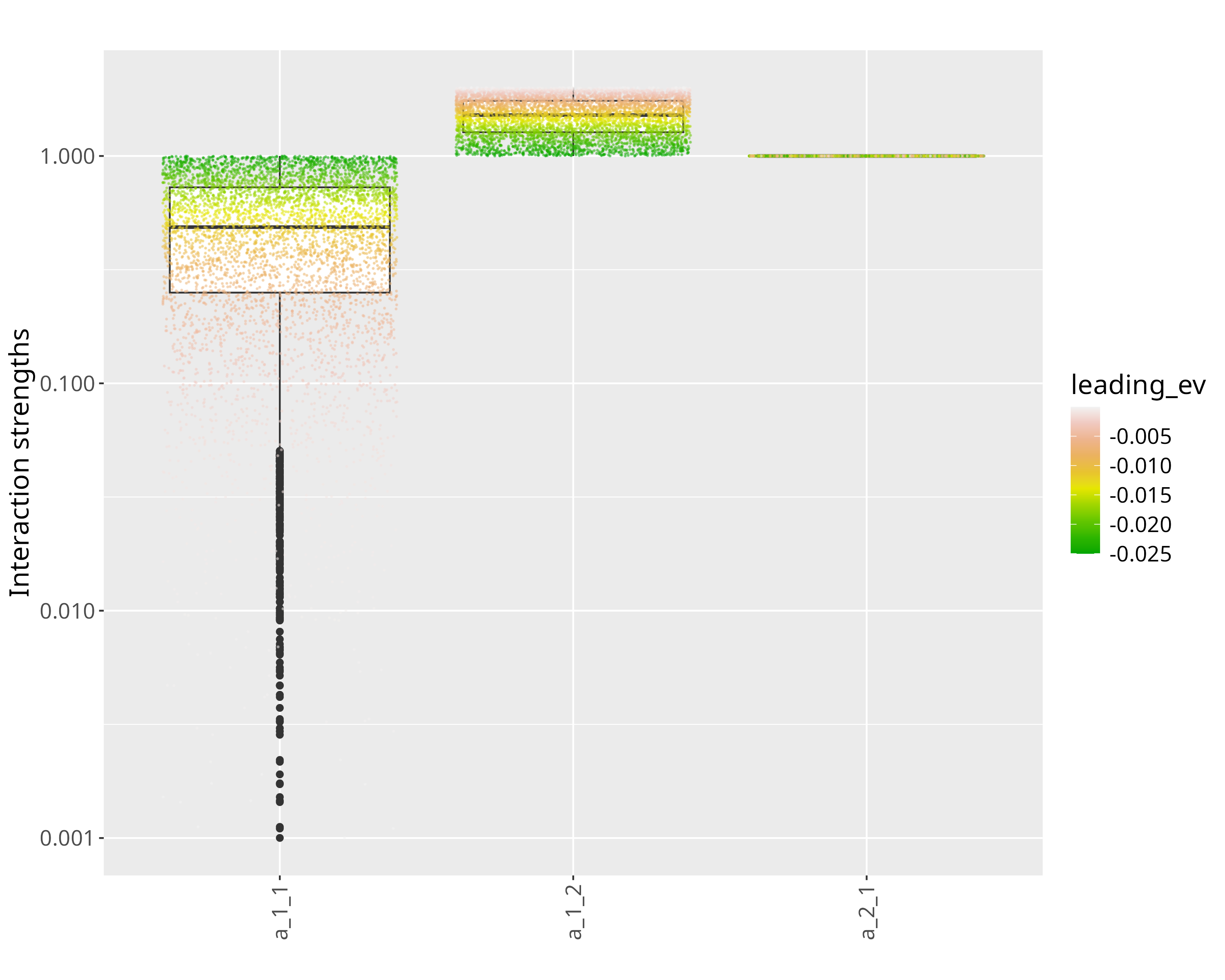 --- # Distribution of interaction strengths 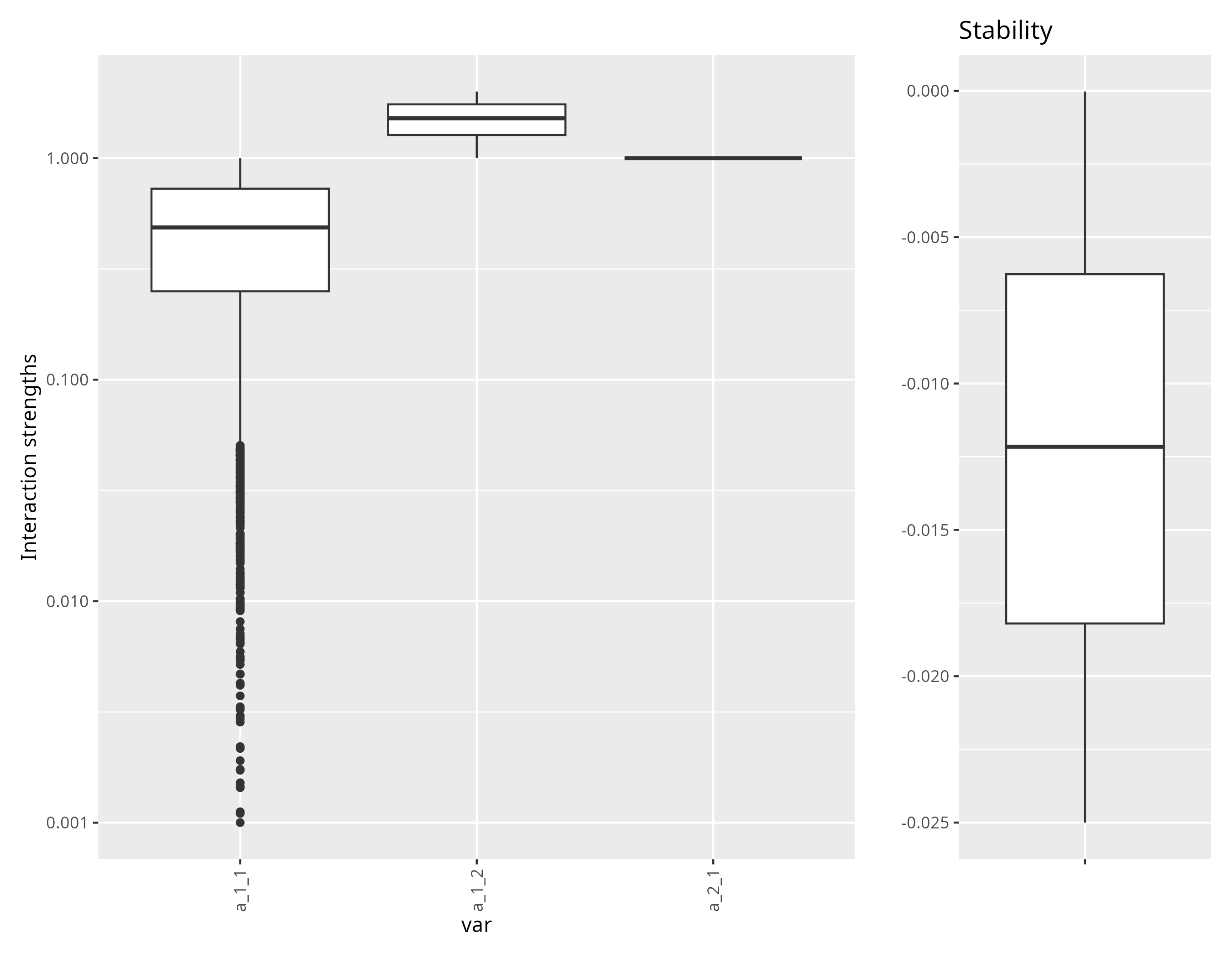 --- # Distribution of interaction strengths 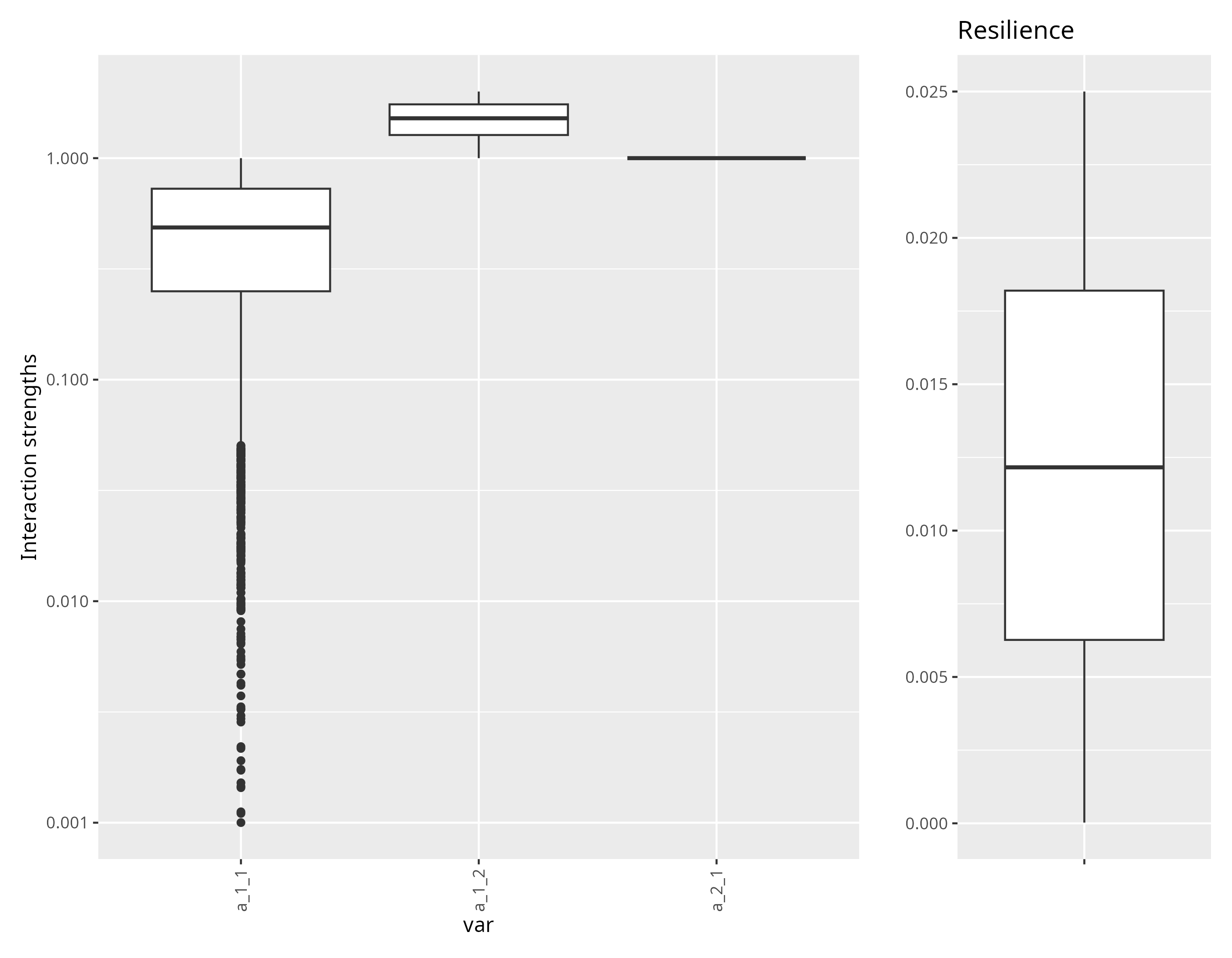 --- # Most stable system 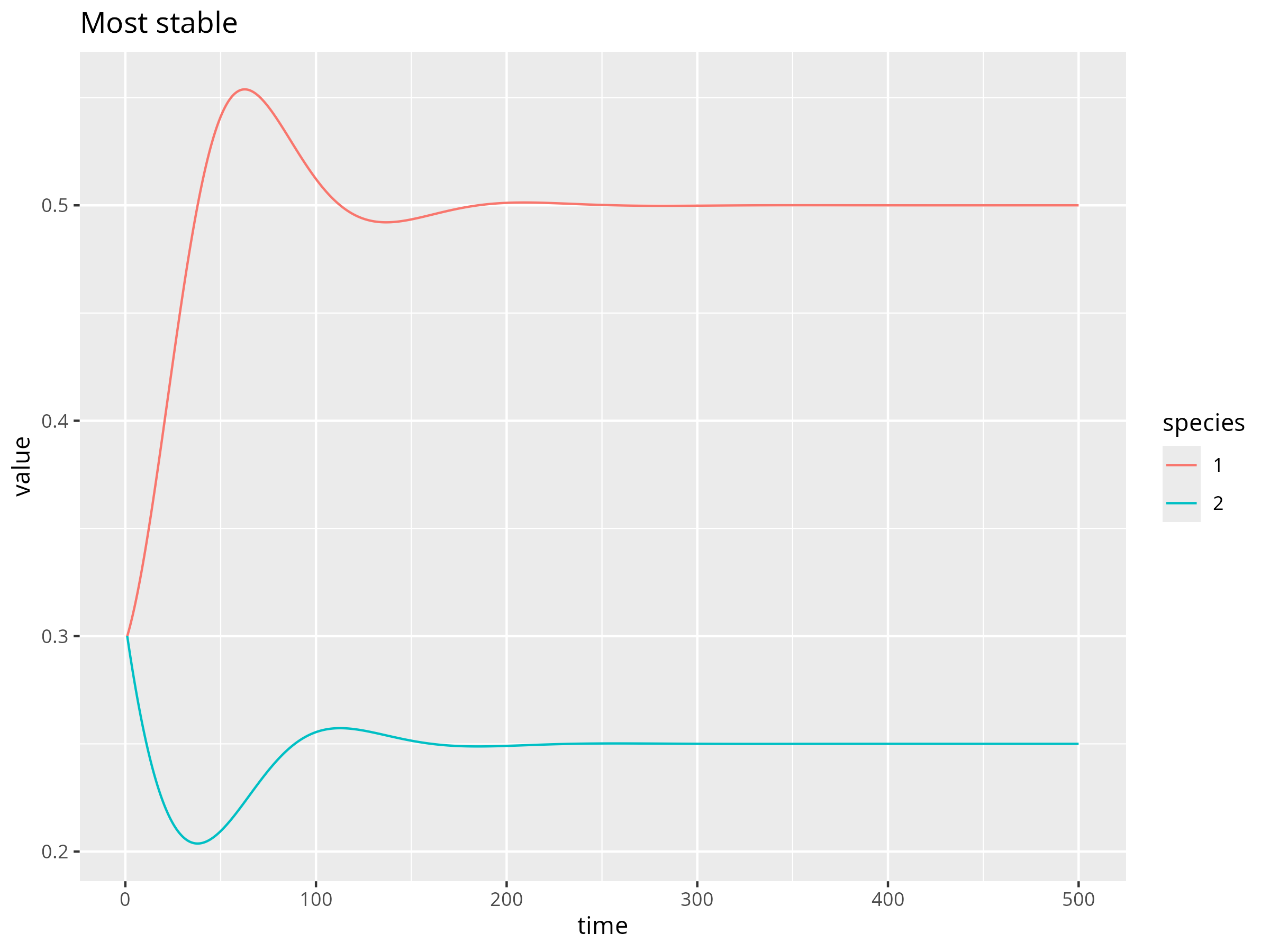 ??? if stability taken as resilience so... --- # Least stable system  --- class: inverse, center, middle # Towards Solving Management Challenges With LIM ![:custom_hr]() ??? go over various potential avenues where we can use LIM --- # A five species example .pull-left[ 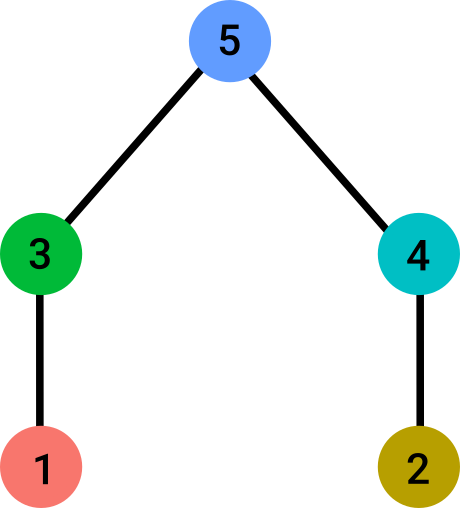 - 5 species, 10 interactions - **assumptions**: - Lotka-Volterra - biomass/population known ] .pull-right[ .font50[ |Symbol | Name | |:------------ |:--------------------------- | |$$a_{1, 1}$$ | intraspecific competition | |$$a_{1, 3}$$ | prey -> predator | |$$a_{2, 2}$$ | intraspecific competition | |$$a_{2, 4}$$ | prey -> predator | |$$a_{3, 1}$$ | predator <- prey | |$$a_{3, 5}$$ | predator -> top predator | |$$a_{4, 2}$$ | predator <- prey | |$$a_{4, 5}$$ | predator -> top predator | |$$a_{5, 3}$$ | top predator <- predator | |$$a_{5, 4}$$ | top predator <- predator | ] ] --- # A five species example .pull-left[  - 5 species, 10 interactions - **assumptions**: - Lotka-Volterra - biomass/population known ] .pull-right[ ### constraints interaction strengths are: - positive - asymmetrical `\(a_{1,3} > a_{3,1}\)` ] --- # A five species example - resilience 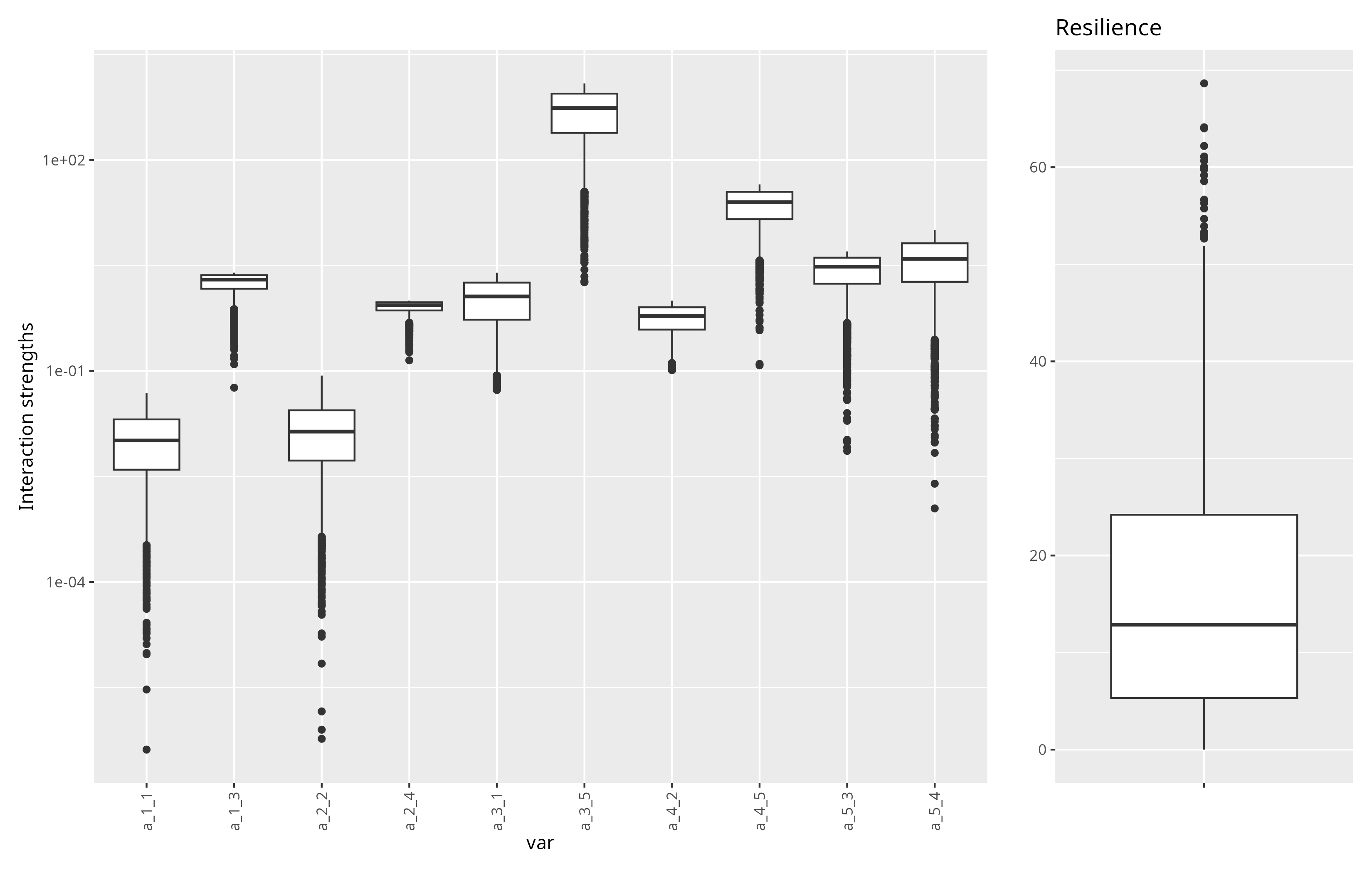 - Potential biostructures and their resilience --- # Least stable vs. top 25% most stable 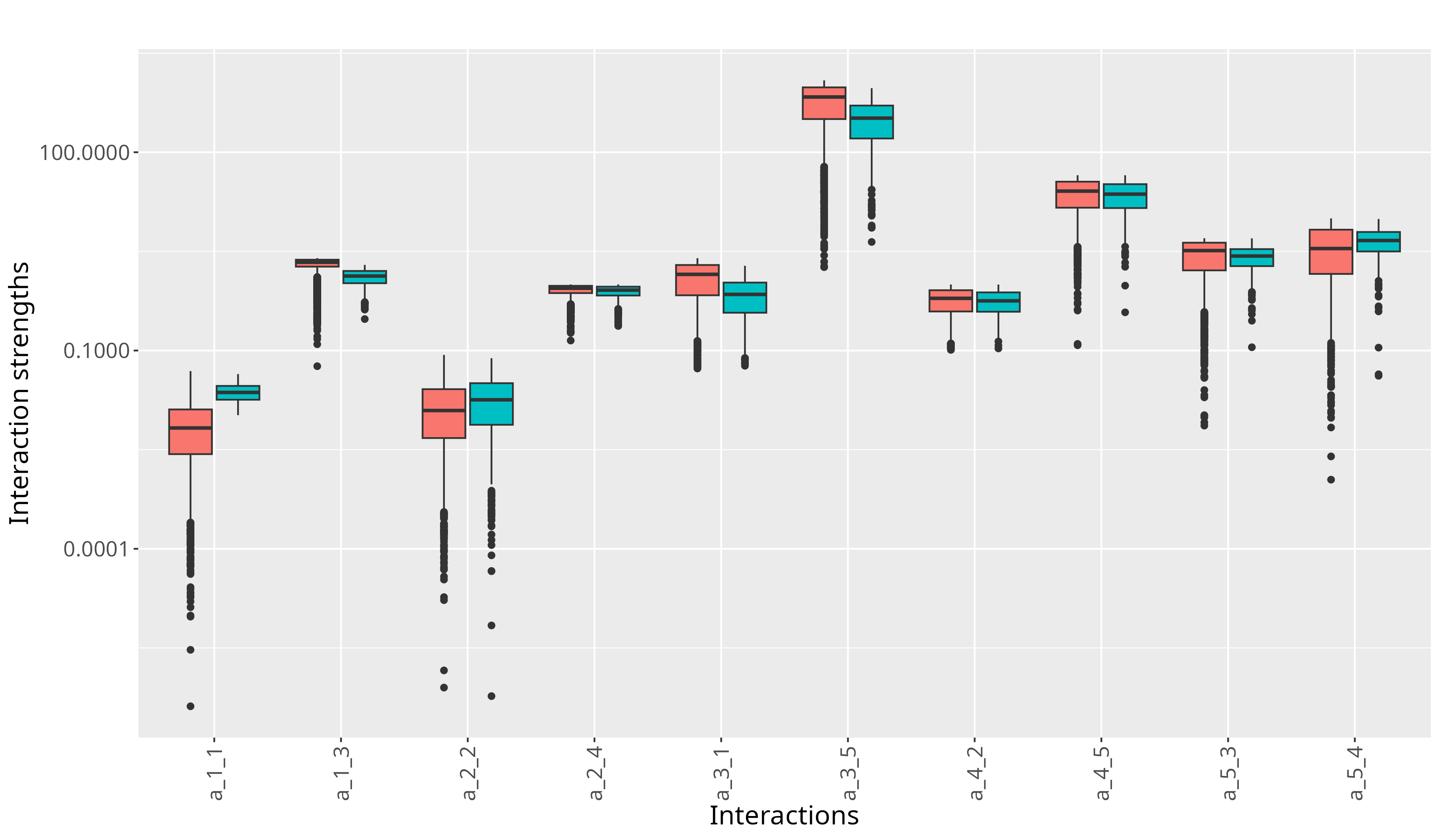 --- # Least stable vs. top 10% most stable 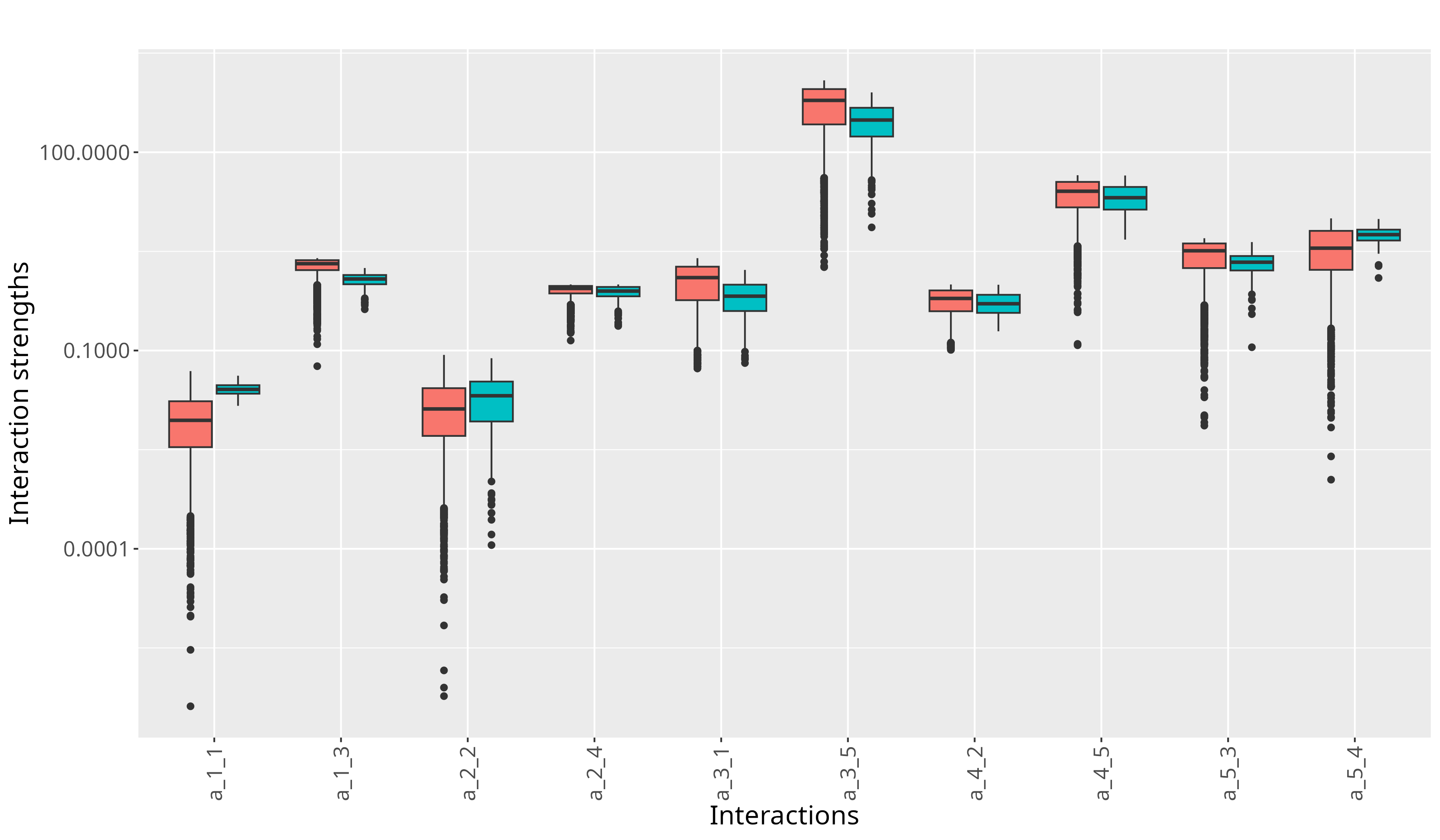 --- # Least stable vs. top 1% most stable 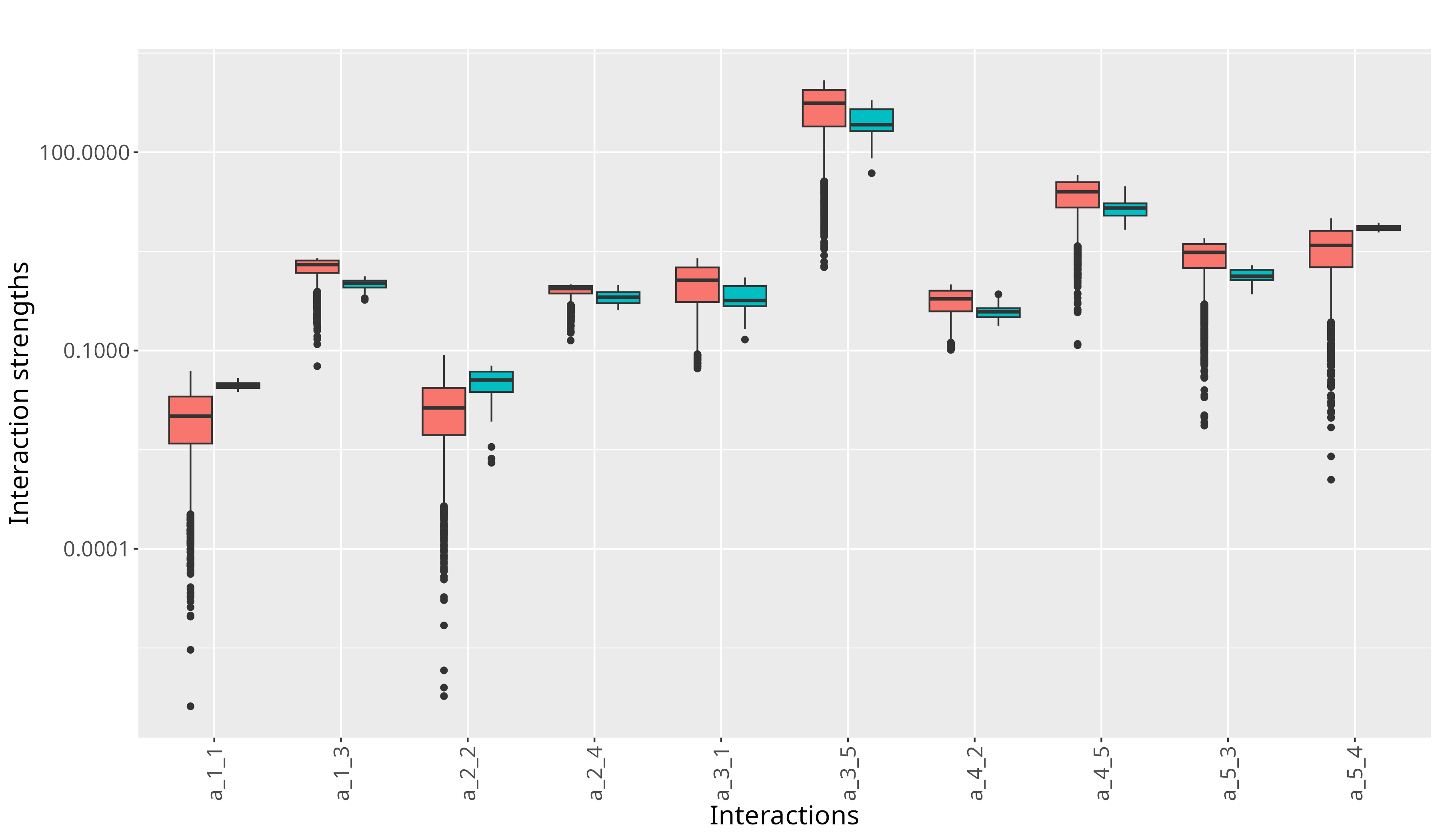 --- # Analyzing temporal variations  --- # Structural changes 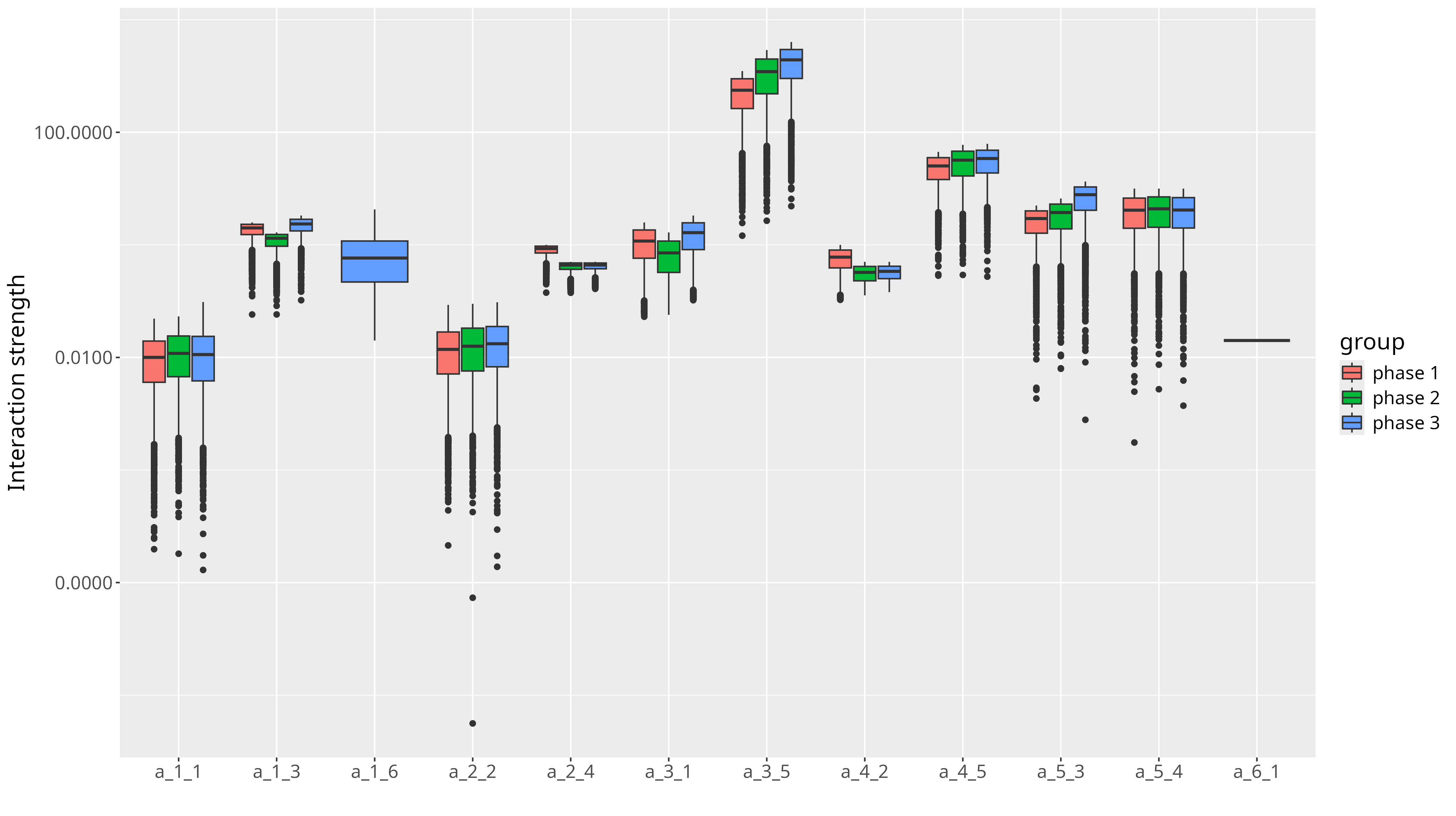 --- # Evolution of the resilience 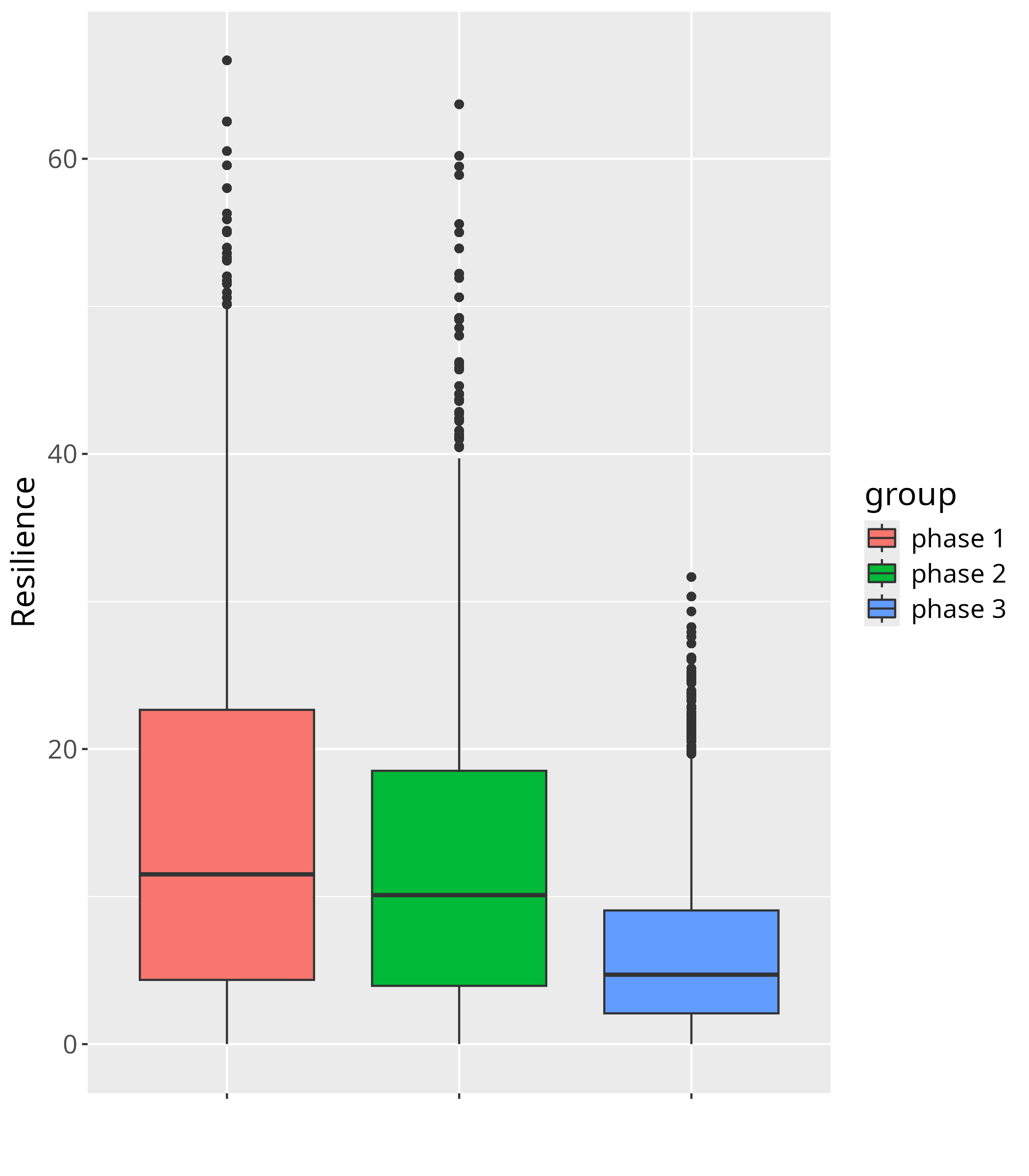 --- # Future Challenges ### A flexible tools to add constraints - allometric constraints (previous presentation) - constraints based on time series (variation of biomass) -- ### Work on real food webs - This requires **data** (next presentation) - food webs topology (spatially explicit) - biomass time series - interactions constraints -- ### Expected outcomes 1. Paper: "Towards Solving Management Challenges With LIM" 2. R package: "fwebinfr" 3. Shiny App --- class: inverse, center, middle # Interactive tool (Shiny App) ![:custom_hr]() ??? very seminal very simple but useful to know if we want to join force <!-- demo here 5-10 min -->